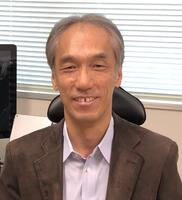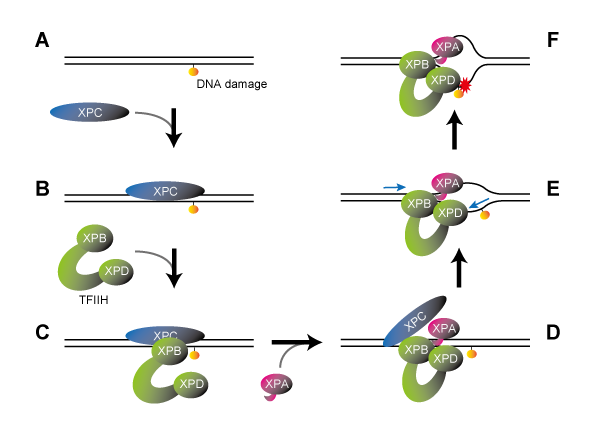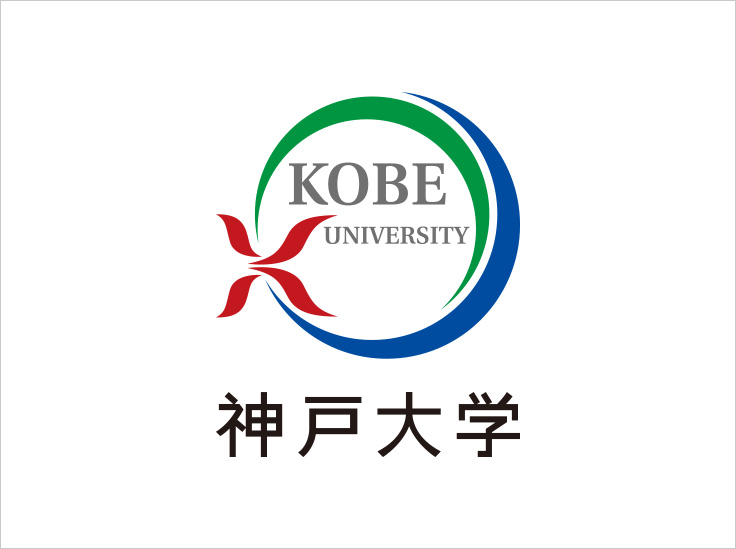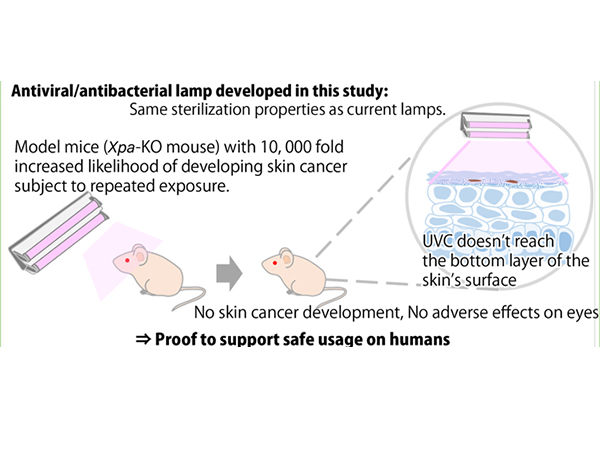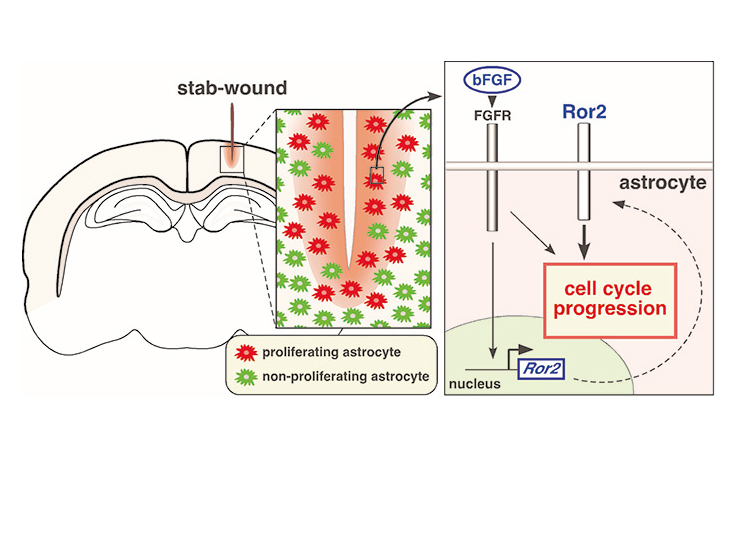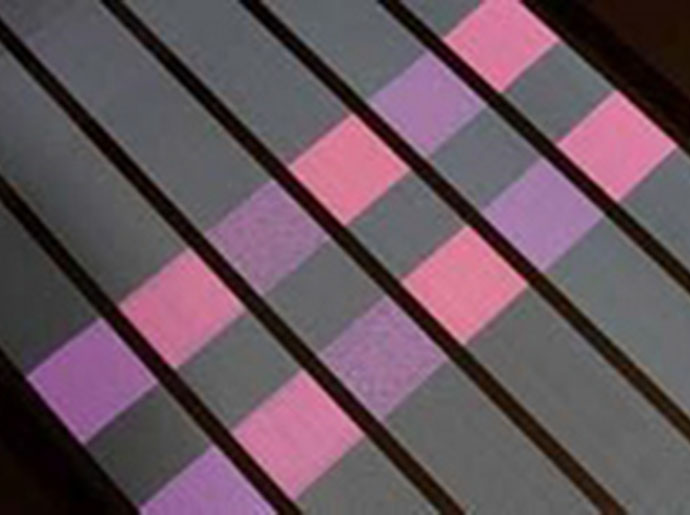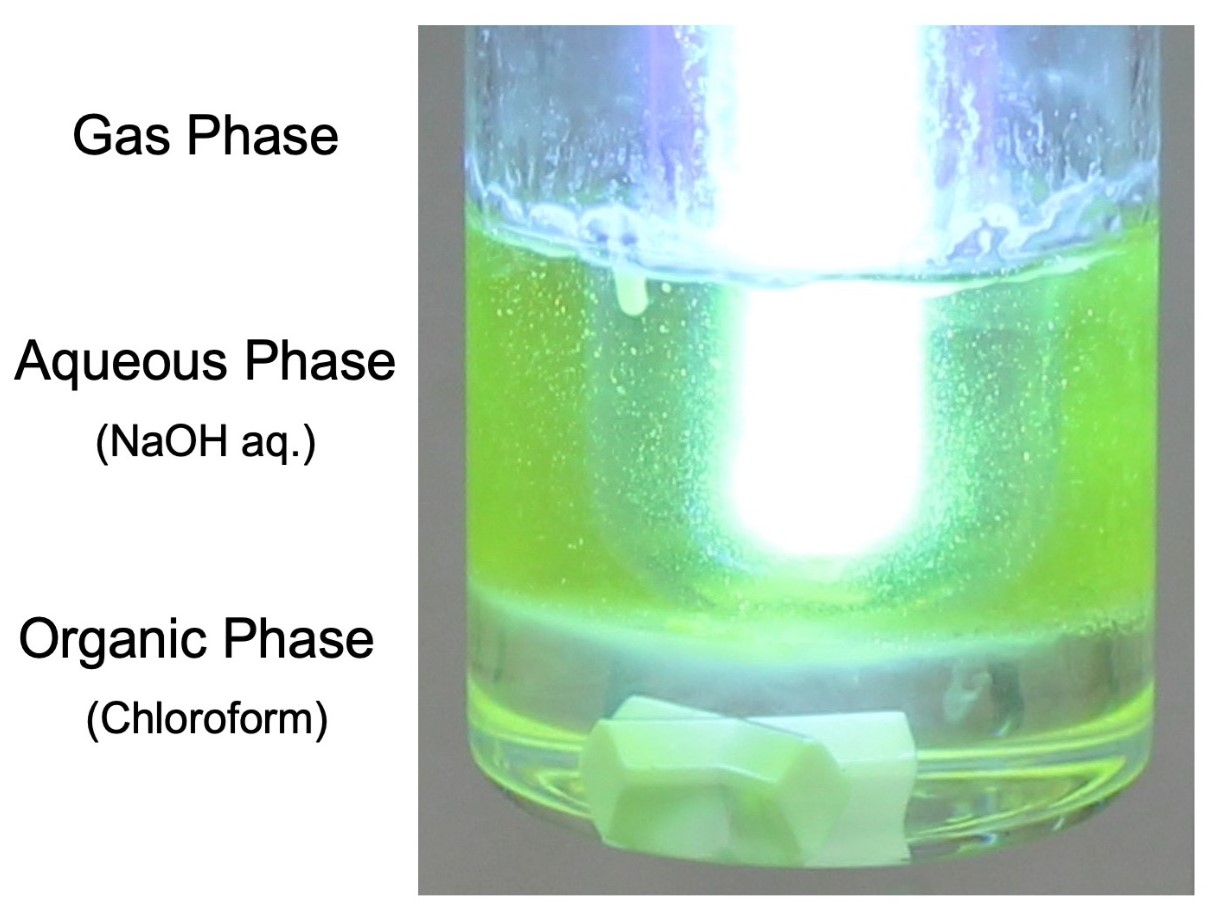Researchers at the Friedrich Miescher Institute for Biomedical Research in Switzerland in collaboration with researchers in NIBR, the University of Basel, and Professor SUGASAWA Kaoru, a member of the Biosignal Research Center at Kobe University, have contributed to revealing the molecular mechanism by which DNA damaged by ultraviolet rays is efficiently repaired. The discovery has potential applications in developing drugs to combat skin cancer. These findings were published on March 31 in Nature.
DNA damage occurs many thousands of times in each cell every day. If the damage is not repaired in time, it interferes with DNA replication and transcription, causes cell death and chromosome instability, and there is a risk of cells becoming cancerous. DNA repair is vital for healthy, functioning cells.
Ultraviolet (UV) radiation is a source of DNA damage. When DNA is damaged by UV radiation, a protein complex (CRL4ADDB2 ubiquitin ligase, consisting of DDB1-CUL4A-RBX1 (CRL4A) and DDB2) detects the problem and associates with the damaged site. This protein complex ensures the ubiquitination1 of the surrounding proteins, facilitating the efficient repair of DNA. Researchers already knew that in order to trigger the ubiquitination process, a small protein called NEDD8 needs to modify CUL4A, a part of the protein complex CRL4A. When the DNA is undamaged, NEDD8 is prevented from modifying CUL4A by another protein complex called COP9 signalosome (CSN), and CRL4A remains deactivated. However, until now the details of this regulatory mechanism for ubiquitination were unclear.
The research group used cryo-electron microscopy to perform 3-dimensional structural analysis of the protein complexes. Their analysis revealed that when CSN binds to the CRL4ADDB2 ubiquitin ligase, a structural change occurs in CSN, enabling it to remove NEDD8 from CUL4A. When CRL4A is activated unnecessarily, DDB2 becomes ubiquitinated and degraded, so this safety mechanism is a crucial part of regulating DNA repair. The analysis also revealed that when damaged DNA binds to DDB2, CSN can no longer bind to CRL4ADDB2 ubiquitin ligase, clarifying the mechanism that underlies the activation of ubiquitination in response to DNA damage at a molecular level.
In addition to DDB2, CRL4A binds to other proteins to perform multiple functions. CUL4A, which forms part of CRL4A, is one of the cullin proteins, key components of ubiquitin ligases. This family of ubiquitin ligases has over 200 members, all regulated by CSN. Professor Sugasawa comments, “The regulatory mechanism revealed through this analysis is universal. It has significance for a wide range of functions in living organisms, not limited to DNA repair and combating skin cancer”.
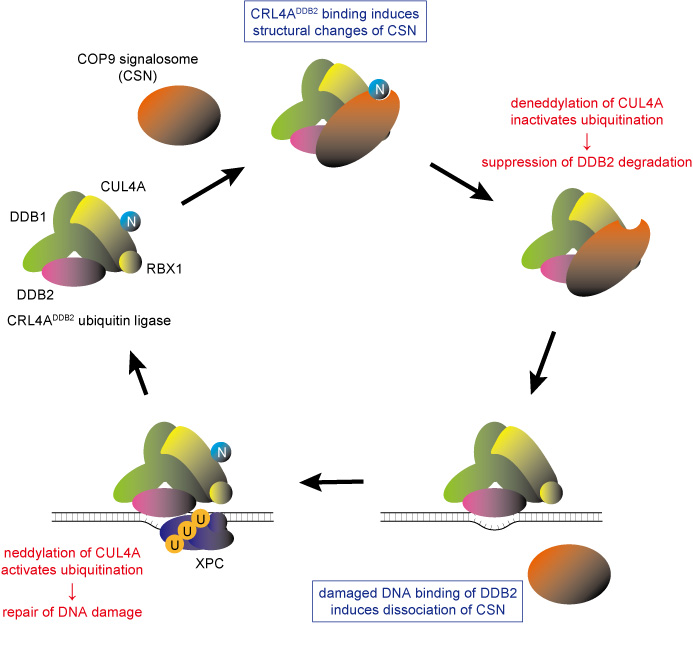
- *1. Ubiquitination
- A type of protein modification in which a small protein called ubiquitin is covalently attached to another protein. Ubiquitination, as well as being a signal of protein degradation, has various other functions. Several proteins resemble ubiquitin, including NEDD8.
Journal information
- Title
- “Cullin-RING ubiquitin E3 ligase regulation by the COP9 signalosome”
- Authros
- Simone Cavadini, Eric S. Fischer, Richard D. Bunker, Alessandro Potenza, Gondichatnahalli M. Lingaraju, Kenneth N. Goldie, Weaam I. Mohamed, Mahamadou Faty, Georg Petzold, Rohan E. J. Beckwith, Ritesh Tichkule, Ulrich Hassiepen,Wassim Abdulrahman, Radosav S. Pantelic, Syota Matsumoto, Kaoru Sugasawa, Henning Stahlberg, Nicolas H. Thomä.
- Journal
- Nature

